NYC’s Forgotten ‘War on Christmas Trees’
Discover how an obscure holiday crackdown affects festive street vendors today!


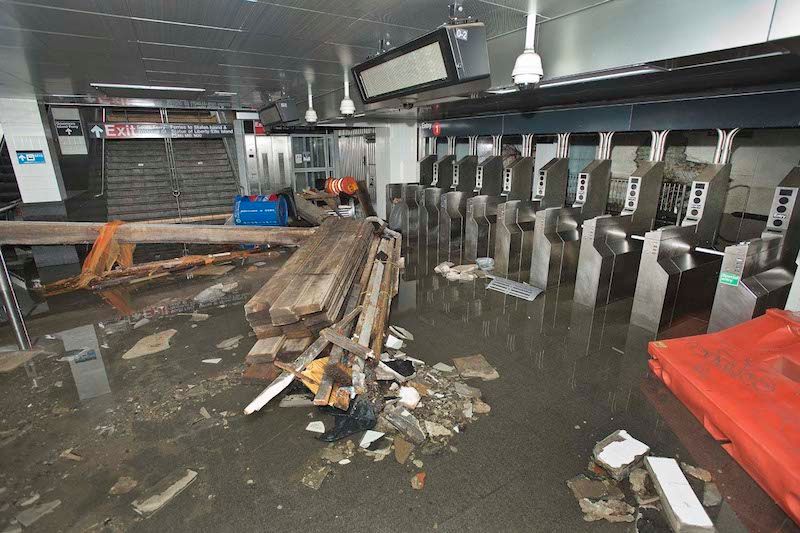
Seawater fills the South Ferry subway station at the tip of Manhattan . Metropolitan Transportation Authority / Patrick Cashin, 2012.
Yesterday marked the 5th anniversary of Hurricane Sandy in New York City, calling to mind the incredible damage the city’s transit system is susceptible to. The New York Transit Museum’s exhibition Bringing Back the City: Mass Transit Responds to Crisis calls to mind the around the clock work the city’s transit employees do to prepare, protect, and restore the transit system both against natural and man-made disasters. This is exhibition is particularly poignant given yesterday’s five year anniversary after Superstorm Sandy.
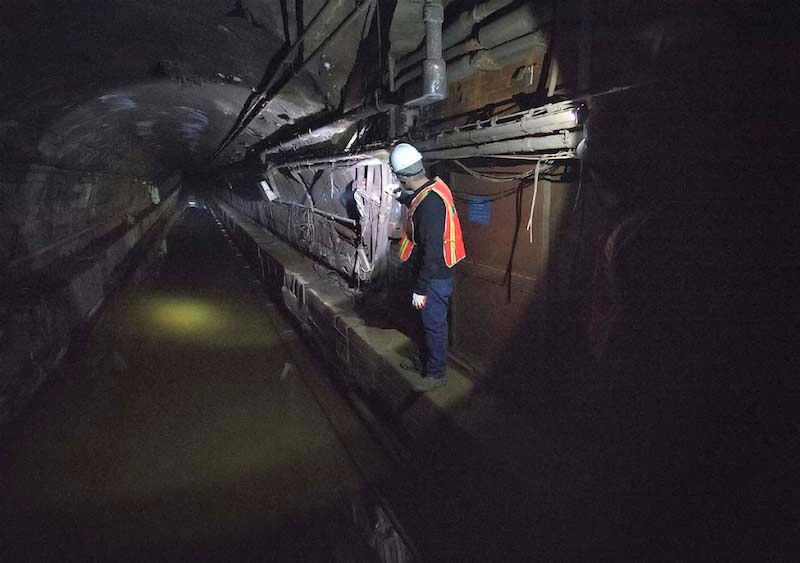
Surveying the floods on the L line after superstorm Sandy. Courtesy of Metropolitan Transportation Authority / Patrick Cashin, 2012.
Learning from Hurricane Irene just one year before, city transit employees worked hard to prepare for the storm, despite the crippling effects left in its wake. 17% of New York City was flooded, including seven subway tunnels connecting Manhattan to Brooklyn and Queens, along with the Brooklyn-Battery Tunnel and others.
While we may have grumbled at the line closures and seemingly endless construction and delays, it is important to note that the system has been brought back far more quickly than many had predicted, considering the scope of the damage.
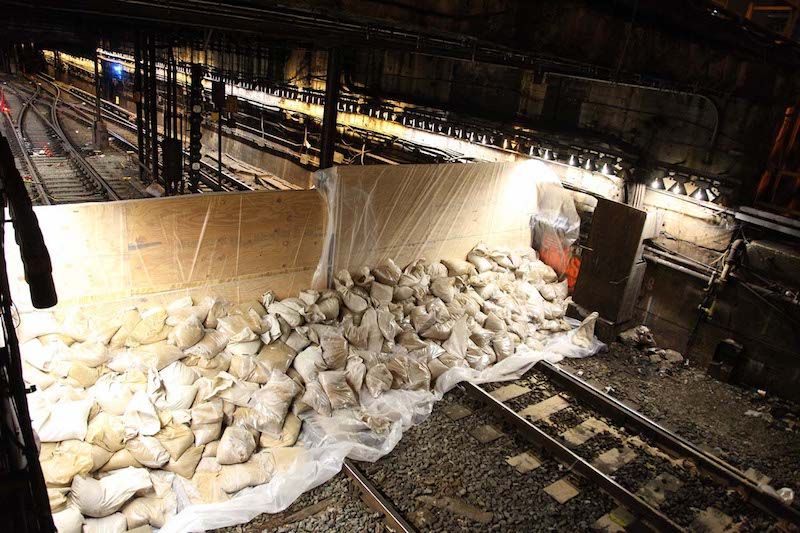
A temporary wall stands ready to hold back Sandy’s flood waters at the Lenox Subway Terminal at 148th Street.Courtesy of the New York Transit Museum Collection / Photo by Leonard Wiggins, 2012.
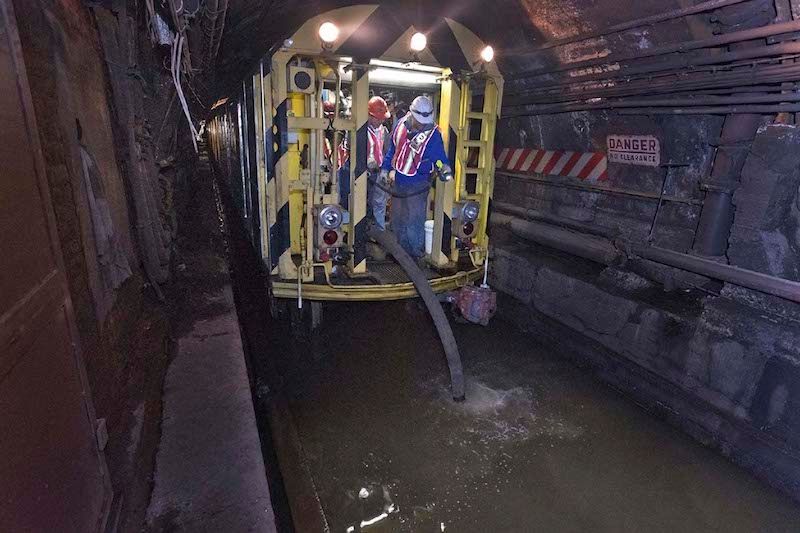
Hydraulics operators work around the clock pumping seawater from the L line tunnel under the East River. Metropolitan Transportation Authority / Patrick Cashin, 2012.
In honor of the Transit workers’ ingenuity and resourcefulness in response to crises like Sandy, images, artifacts, oral histories, and data visualizations featured in the exhibit offer a fresh perspective on Superstorm Sandy and the process of restoring service and recovering from damage.
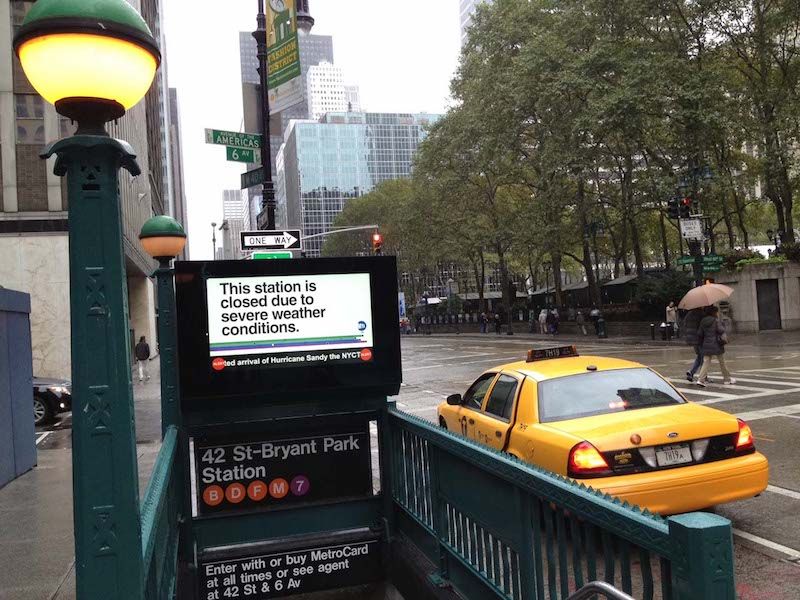
Once the MTA made the decision to shut down the transit system, it used digital panels, paper notices, and every available form of social media to alert the public and provide information. Courtesy of the Metropolitan Transportation Authority / Adam Lisberg, 2012.
By examining topics from sustainability, urban planning, engineering, and the cultural landscape of the city, exhibition also offers a perspective on recent history including the attacks of September 11, the 2003 Northeast Blackout, the Blizzard of 2010, and Hurricane Irene, all which tested the transit system’s response crises.
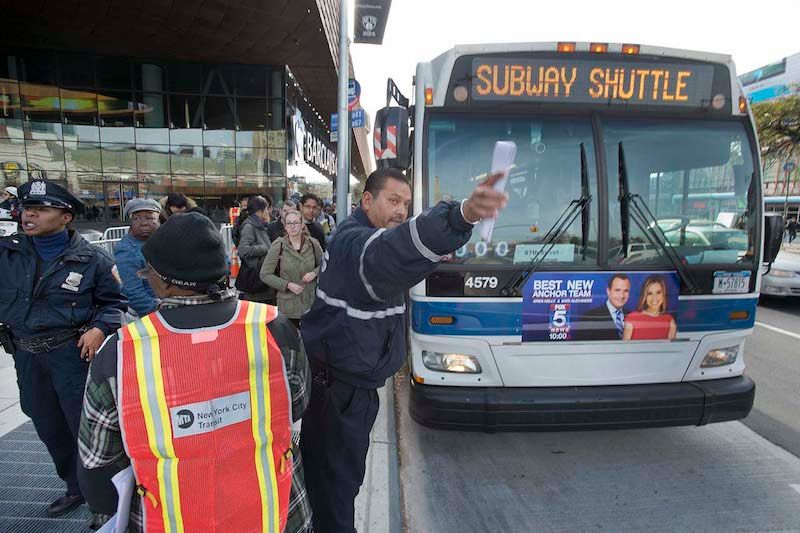
With the East River tunnels out of commission, an impromptu “Bus Bridge” carries commuters from Brooklyn to Manhattan. Metropolitan Transportation Authority / Patrick Cashin, 2012.
The worsening condition of the city’s subway system makes it hard to acknowledge the hard work transit employees put into keeping it together. Their preparedness not only during Irene and Sandy, but the response after 9/11, is something that deserves to be commended as we see the system slowly but surely return to its pre-Sandy state (albeit worse for the wear).
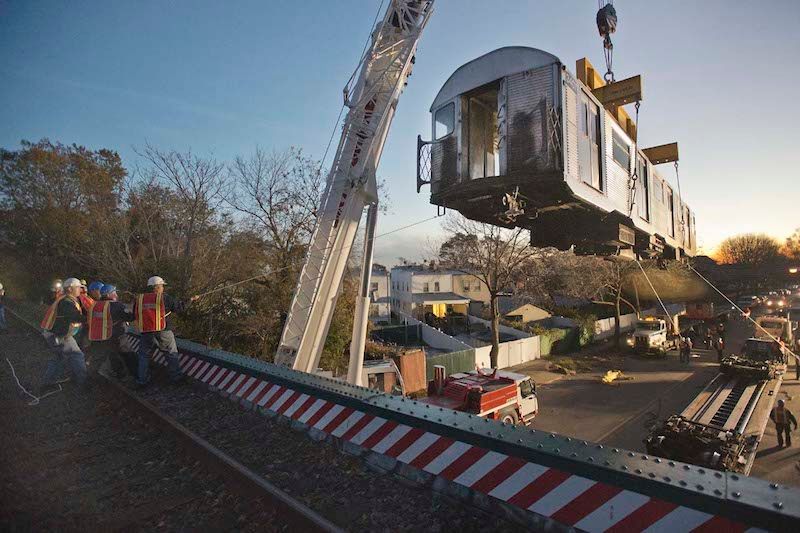
Crews hoist a subway car onto a flatbed truck for transport to the Rockaways . Metropolitan Transportation Authority / Patrick Cashin, 2012.
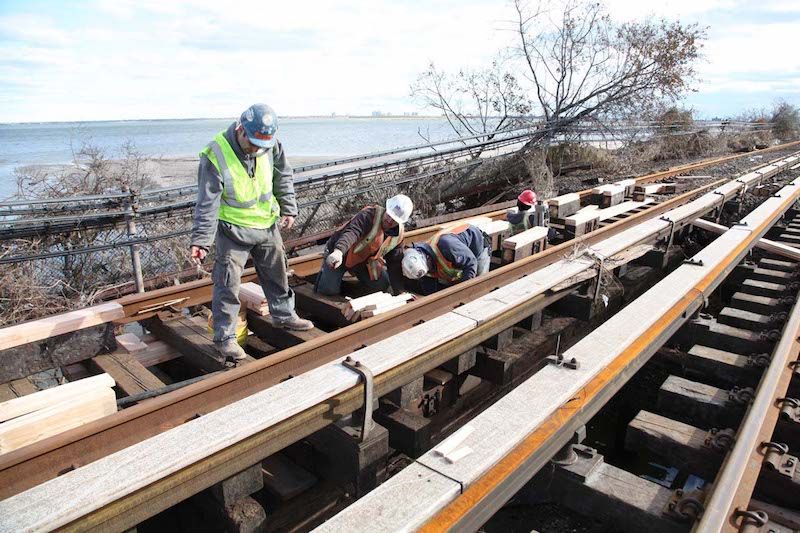
Workers repair the heavily damaged A train track that runs along the North Channel Bridge to the Rockaways. Courtesy of the New York Transit Museum Collection / Photo by Leonard Wiggins, 2012.
Bringing Back the City: Mass Transit Responds to Crisis will be on view through September 2018 at the Transit Museum in Downtown Brooklyn. A digital version of the exhibit’s content is available online, as well.
Next, check out 4 Times NYC Was Rescued by Ferries: 9/11, Northeast Blackout, Miracle on the Hudson and Hurricane Sandy and see What A Full-Scale Emergency Response Exercise Looks Like on NYC’s George Washington Bridge.
Subscribe to our newsletter